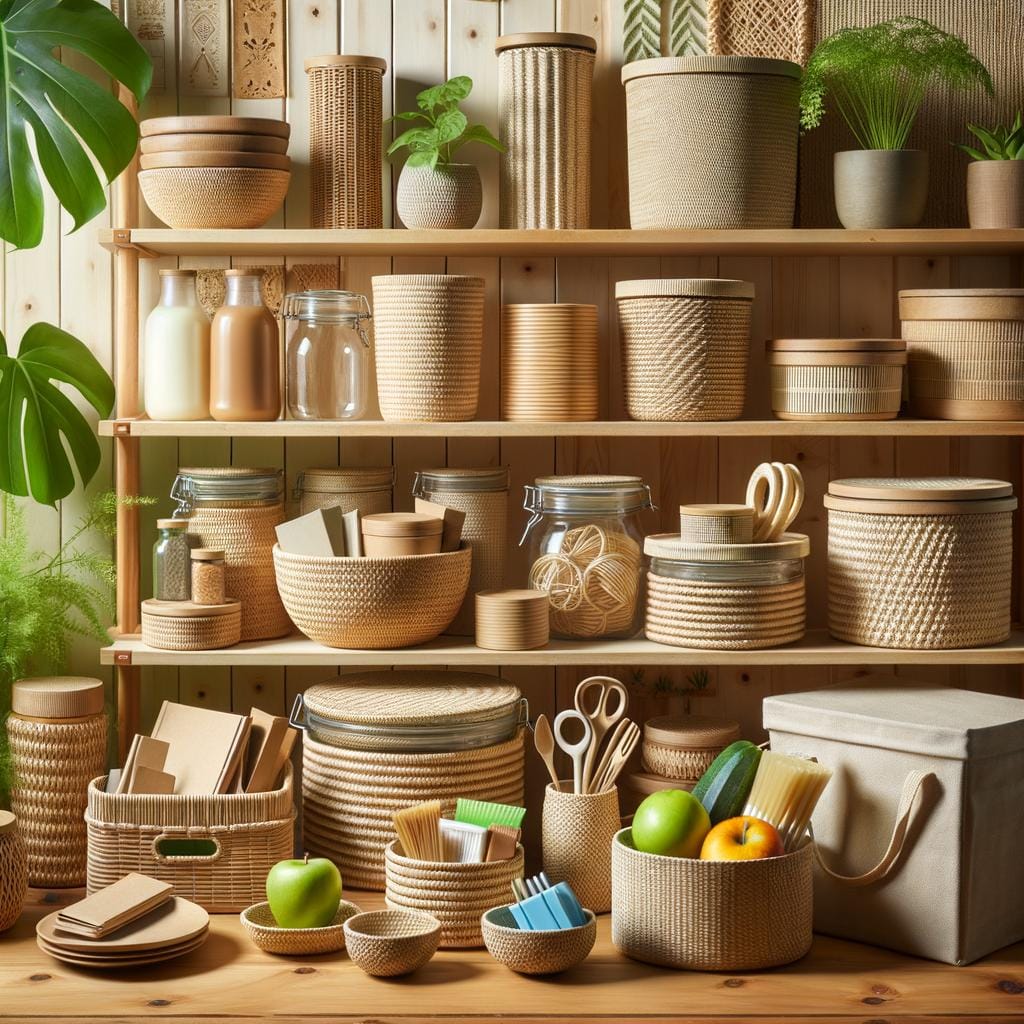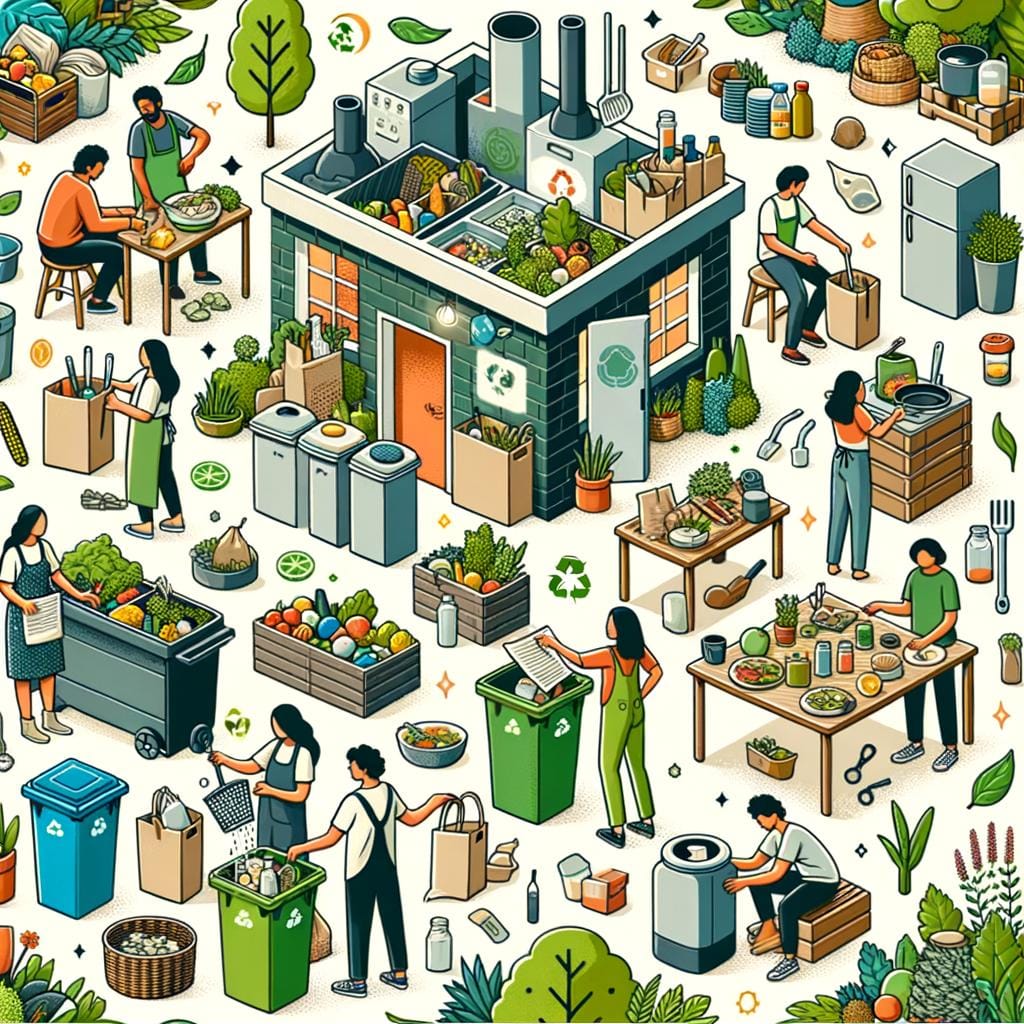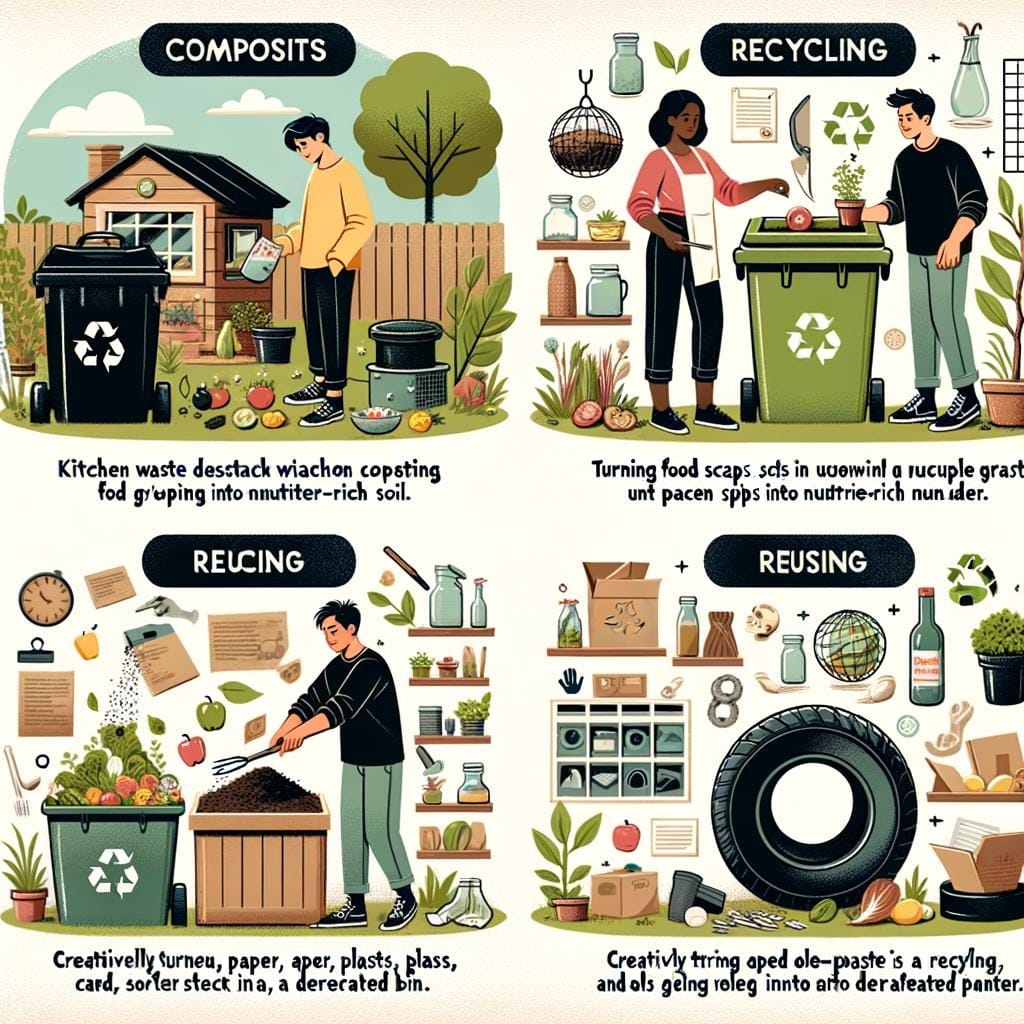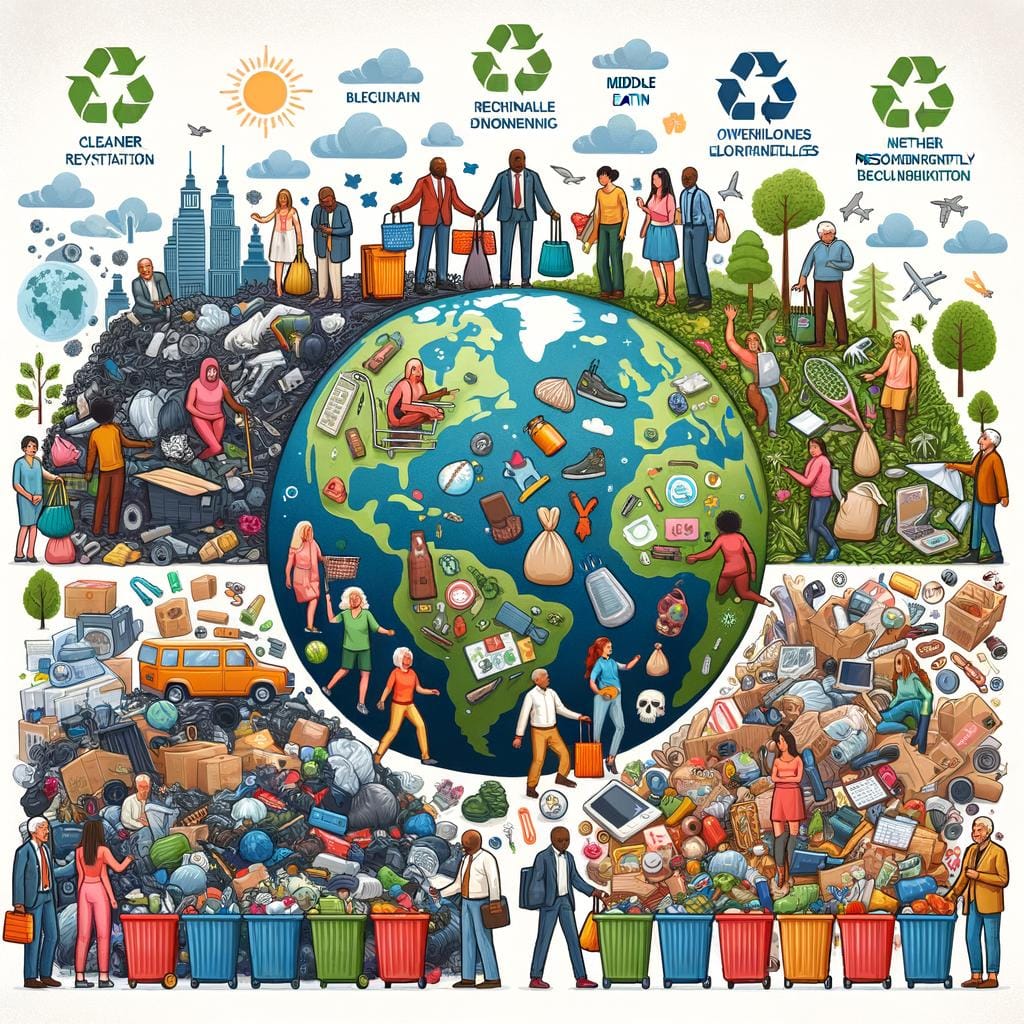As society becomes more conscientious of environmental sustainability, the demand for sustainable storage solutions continues to grow. Sustainable storage solutions encompass a range of eco-friendly practices and products designed to reduce waste, conserve resources, and minimize environmental impact. From utilizing recyclable materials to implementing energy-efficient technologies, the focus on sustainability in storage is crucial for promoting a greener future.
Traditional storage methods often come with a significant environmental cost. The production and use of plastic containers, cardboard boxes, and other non-biodegradable materials contribute to pollution, deforestation, and greenhouse gas emissions. Additionally, the disposable nature of many storage solutions leads to increased waste that often ends up in landfills or oceans. It is clear that a shift towards sustainable storage practices is necessary to mitigate these harmful effects on the planet.
By adopting sustainable storage solutions, individuals and companies can reap numerous benefits beyond just reducing their environmental footprint. From cost savings through reusable packaging to improved organization and space efficiency with innovative storage designs, the advantages are multifaceted. Not only do sustainable storage solutions promote eco-conscious living, but they also contribute to a more efficient and clutter-free living or working environment.
The Environmental Impact of Traditional Storage Methods
Traditional storage methods can have a significant negative impact on the environment. From plastic storage containers to non-biodegradable packing materials, these practices contribute to pollution, resource depletion, and waste generation. Here are some key ways in which traditional storage methods harm the environment:
1. Plastic Pollution: Disposable plastic containers and bags are a common choice for storage, but they often end up in landfills or oceans, where they can take hundreds of years to decompose. This leads to pollution of waterways and harm to marine life.
2. Deforestation: Many traditional storage solutions involve wood products like shelves or cabinets, leading to deforestation and habitat destruction. Unsustainable logging practices also contribute to loss of biodiversity.
3. Energy Consumption: Traditional storage facilities often rely on energy-intensive cooling systems and lighting, resulting in high energy consumption and greenhouse gas emissions.
To mitigate these environmental impacts, individuals and companies are increasingly turning to sustainable storage solutions that prioritize eco-friendly materials, efficient design, and resource conservation. By making the switch to sustainable storage options, we can help reduce our carbon footprint and minimize our impact on the planet while still effectively organizing our spaces.
By opting for sustainable storage solutions such as eco-friendly containers made from recycled materials or upcycled shelving crafted from reclaimed wood, individuals can curb their contribution to environmental degradation. In addition to reducing waste generation through the use of biodegradable materials, sustainable storage solutions also promote responsible consumption by encouraging users to make conscious choices about their organizational needs. Making small changes like these can have a big impact on our world’s sustainability efforts over time.
Additionally, implementing sustainable storage solutions in commercial settings can lead to cost savings for businesses through reduced energy consumption and waste management costs. Investing in long-lasting, environmentally friendly storage options not only benefits the planet but also contributes positively to a company’s bottom line by improving efficiency and promoting a positive brand image among environmentally-conscious consumers.
Benefits of Implementing Sustainable Storage Solutions
Implementing sustainable storage solutions can have numerous benefits, not only for the environment but also for your own well-being. By opting for eco-friendly storage methods, you are making a conscious choice to reduce your carbon footprint and contribute to a healthier planet. Sustainable storage solutions prioritize the use of renewable resources, minimize waste generation, and promote the re-use of materials, ultimately leading to a more sustainable lifestyle.
Here are some key benefits of implementing sustainable storage solutions:
- Reduced environmental impact: Traditional storage methods often involve the use of non-biodegradable materials, such as plastic containers, that end up in landfills and contribute to pollution. By choosing sustainable options like bamboo or glass containers, you can significantly reduce your environmental impact.
- Healthier living environment: Many conventional storage solutions contain harmful chemicals and toxins that can leach into the air or food items stored within them. Sustainable storage alternatives made from natural materials help create a healthier indoor environment, free from harmful substances.
- Cost-effective in the long run: While the upfront cost of sustainable storage solutions may be slightly higher than traditional options, they are often more durable and require less frequent replacement. This means that over time, you can save money by investing in quality, long-lasting products.
Incorporating sustainable storage solutions into your home or office space is not just about being environmentally conscious – it’s also about creating a more efficient and visually appealing space. Whether you choose upcycled shelving units or eco-friendly containers made from recycled materials, these choices can enhance both the functionality and aesthetic appeal of your storage areas.
By embracing sustainability in your organizational systems, you are taking a step towards a greener future while enjoying the benefits of a clutter-free and harmonious living or working environment.
Types of Sustainable Storage Solutions (Eg Eco-Friendly Containers, Upcycled Shelving)
Sustainable storage solutions have become increasingly popular as individuals and companies look for ways to reduce their environmental impact. One type of sustainable storage solution that has gained traction is the use of eco-friendly containers.
These containers are typically made from recycled or biodegradable materials, such as bamboo or cork, and are designed to be reusable and durable. Not only do eco-friendly containers help reduce waste, but they also minimize the use of harmful chemicals that are often found in traditional plastic storage containers.
Another innovative sustainable storage option is upcycled shelving. Upcycled shelving involves repurposing old or unused items, such as wooden pallets or crates, into functional storage units. Not only does this practice prevent these items from ending up in landfills, but it also adds a unique and creative touch to any space. Upcycled shelving can be customized to fit specific needs and styles, making it a versatile and sustainable storage solution for both residential and commercial spaces.
In addition to eco-friendly containers and upcycled shelving, other sustainable storage solutions include using natural fibers for baskets and bins, investing in modular storage systems made from sustainable materials like bamboo or reclaimed wood, and incorporating vertical storage options to maximize space efficiency. By implementing these types of sustainable storage solutions, individuals and companies can not only reduce their carbon footprint but also create aesthetically pleasing and organized spaces that promote a green lifestyle.
| Sustainable Storage Solution | Description |
|---|---|
| Eco-Friendly Containers | Containers made from recycled or biodegradable materials for reusable and chemical-free storage. |
| Upcycled Shelving | Repurposed old items like wooden pallets into creative and functional shelving units. |
| Natural Fiber Baskets & Bins | Storage options using natural fibers like bamboo or jute for an eco-friendly alternative. |
Case Studies
In today’s world, more and more companies and individuals are realizing the importance of sustainable storage solutions in reducing their environmental impact. One successful case study is that of Company X, a retail business that transitioned from using traditional plastic storage containers to eco-friendly alternatives made from recycled materials. By making this simple switch, Company X not only reduced its carbon footprint but also saved costs in the long run.
Another inspiring example comes from Individual Y, a homeowner who implemented upcycled shelving in their garage for storage purposes. By repurposing old wooden crates and pallets, Individual Y not only created a unique storage solution but also contributed to reducing waste by giving new life to items that would have otherwise been discarded. This case study highlights how creativity and sustainability can go hand in hand when it comes to storage solutions.
It is clear from these case studies that there are practical and effective ways to adopt sustainable storage solutions in both commercial and residential settings. Whether through utilizing eco-friendly containers or getting creative with upcycled materials, companies and individuals have the power to make a positive impact on the environment while also optimizing their storage spaces for efficiency.
By showcasing these success stories, more people can be inspired to make the switch to sustainable storage solutions for a greener future.
| Company/Individual | Sustainable Storage Solution |
|---|---|
| Company X | Eco-friendly containers made from recycled materials |
| Individual Y | Upcycled shelving using old wooden crates and pallets |
DIY Sustainable Storage Solutions for a Budget-Friendly Option
Implementing sustainable storage solutions doesn’t have to break the bank. In fact, there are numerous do-it-yourself (DIY) options that are not only cost-effective but also environmentally friendly. One budget-friendly option for sustainable storage is repurposing items you already have at home.
For example, old mason jars can be used to store small items like spices in the kitchen or screws and nails in the garage. By upcycling these jars, you are reducing waste while creating a unique storage solution.
Another DIY sustainable storage solution is creating your own shelving units using repurposed materials such as wooden crates or pallets. These materials can easily be found for free or at a low cost, and with a little creativity and DIY skills, you can transform them into functional storage spaces. Not only does this approach save money, but it also reduces the demand for new resources to be used in traditional shelving units.
For those looking to add a personal touch to their sustainable storage solutions, consider incorporating simple design elements like labeling containers with recycled paper or fabric tags. This not only adds flair to your storage space but also helps keep things organized and easily accessible. By taking a hands-on approach to creating sustainable storage solutions, individuals can play a role in minimizing their environmental impact while enjoying a more organized living space without breaking the bank.
Tips for Maintaining and Organizing Sustainable Storage Spaces
When it comes to implementing sustainable storage solutions, ensuring that the space is organized and maintained properly is crucial for maximizing its efficiency and effectiveness. By following a few simple tips and tricks, individuals and companies can ensure that their sustainable storage spaces remain functional and eco-friendly.
Regular Decluttering
One of the key aspects of maintaining an organized sustainable storage space is regular decluttering. By removing items that are no longer needed or used, the available space can be optimized for more important belongings. Consider donating or recycling items that are still in good condition but no longer serve a purpose, rather than simply throwing them away. Regular decluttering not only helps keep the space organized but also prevents unnecessary waste from building up.
Labeling and Categorizing
To maintain an organized sustainable storage space, labeling and categorizing items is essential. This makes it easier to locate specific items when needed, reducing the time spent searching through cluttered shelves or containers. Use eco-friendly labels made from recycled materials or opt for reusable options such as chalkboard labels that can be easily changed as needed. Categorizing items based on type or frequency of use can further streamline the organization process and help prevent clutter from accumulating.
Invest in Sustainable Storage Solutions
For long-term organization and sustainability benefits, consider investing in sustainable storage solutions such as bamboo shelves, recycled plastic containers, or upcycled furniture. These eco-friendly options not only contribute to reducing your environmental footprint but also add a touch of style to your storage spaces.
Look for products made from renewable materials or those with minimal packaging to further enhance the sustainability aspect of your storage solutions. By choosing environmentally conscious storage options, you can create a cohesive and eco-friendly organizational system that benefits both you and the planet.
Future Trends in Sustainable Storage Solutions
As the world continues to prioritize sustainability in all aspects of life, including storage solutions, innovative technologies and materials are being developed to make storage more eco-friendly. This section will explore some of the future trends in sustainable storage solutions that are revolutionizing the way we store our belongings.
Smart Storage Systems
One exciting trend in sustainable storage solutions is the development of smart storage systems. These systems utilize technology such as sensors, data analytics, and automation to optimize space usage and reduce energy consumption. By using real-time data to track inventory levels and adjust storage configurations accordingly, smart storage systems can help minimize waste and maximize efficiency.
Biodegradable Packaging Materials
Another emerging trend in sustainable storage solutions is the use of biodegradable packaging materials. Traditional packaging materials such as plastic bubble wrap and styrofoam peanuts contribute to environmental pollution and take centuries to decompose. Biodegradable alternatives made from materials like corn starch or mushroom mycelium offer a more sustainable option for protecting stored items while minimizing harm to the planet.
Recyclable Modular Storage Units
Modular storage units made from recyclable materials are also gaining popularity as a sustainable storage solution. These units can be easily assembled, disassembled, and reconfigured to fit various spaces and needs, reducing waste generated by traditional fixed storage systems. In addition, the use of recyclable materials ensures that these modular units can be repurposed or recycled at the end of their lifespan, further contributing to a circular economy approach.
Incorporating these innovative technologies and materials into sustainable storage solutions not only benefits the environment but also enhances efficiency and adaptability in organizing spaces. By staying informed about these future trends, individuals and businesses can make conscious choices that align with their sustainability goals while reaping the rewards of a greener future.
Conclusion
In conclusion, the push for sustainable storage solutions is more critical than ever for creating a greener future. The environmental impact of traditional storage methods cannot be underestimated, as they contribute to resource depletion and pollution. By transitioning to eco-friendly containers, upcycled shelving, and other sustainable storage solutions, individuals and companies can make a significant difference in reducing their carbon footprint and preserving the planet.
Implementing sustainable storage solutions offers a range of benefits beyond just environmental preservation. Not only do these options help reduce waste and energy consumption, but they can also lead to cost savings in the long run. Companies that have successfully adopted sustainable storage practices have not only decreased their ecological footprint but have also improved their brand image and customer loyalty by aligning with environmentally conscious values.
As we look towards the future, it is clear that the trend towards sustainable storage solutions will only continue to grow. Innovative technologies and materials are being developed to further enhance the efficiency and sustainability of storage systems.
By staying informed about these advancements and being proactive in implementing them, we can make a positive impact on the environment while also enjoying organized and functional spaces. Embracing sustainable storage solutions is not just a trend; it is a necessary step towards a more sustainable and eco-conscious society.
Frequently Asked Questions
What Are the Sustainable Materials for Storage?
Sustainable materials for storage include options like bamboo, glass, stainless steel, and silicone. These materials are known for their durability, non-toxic properties, and their ability to be reused or recycled easily.
What Is an Alternative to Plastic Storage Bins?
An alternative to plastic storage bins could be using containers made from biodegradable materials like plant-based plastics or compostable fibers. These alternatives help reduce the environmental impact of traditional plastic storage solutions.
What Is the Most Eco-Friendly Food Storage Containers?
The most eco-friendly food storage containers are typically made from materials like glass or stainless steel. These materials are non-toxic, durable, recyclable, and do not leach harmful chemicals into food. Using reusable containers also reduces waste from single-use packaging.

Hello, I’m April Denton, your go-to expert for all things home decluttering and organization. With over a decade of experience helping individuals transform their living spaces into serene, clutter-free sanctuaries, I am passionate about the life-changing benefits of decluttering. My journey into the world of organization began out of necessity, juggling a busy career and a bustling household. I quickly realized that a well-organized home was the key to a more balanced, stress-free life.





